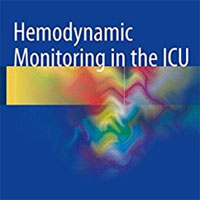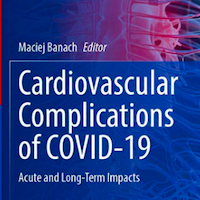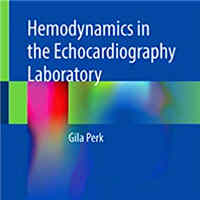Stories Category: Intensive Care
Troponin Role in the Diagnosis and Treatment of Acute Pulmonary Embolism
Acute pulmonary embolism (APE) is a cardiovascular disease with severe consequences, wherein cardiac troponin (Tn) plays a pivotal role in diagnosis and treatment. This article reviews the various roles of Tn in managing... read more
Influenza and COVID-19 Vaccination Rates Among Children Receiving Long-Term Ventilation
Children with tracheostomy and HV are at high risk of morbidity and mortality from viral ARIs. Among MyTRaCh enrollees, we found significant discrepancy between influenza and COVID-19 vaccination status. Compared with... read more

Hemodynamic Monitoring in the ICU
This book describes the pathophysiological significance of the hemodynamic monitoring parameters available to the clinician and their role in providing reliable and reproducible information on the cardiocirculatory status... read more
Early Invasive Strategy Impact on Left Ventricular Function Recovery in Acute Myocardial Infarction Patients
This study underscores the significant benefits of early invasive strategies in improving left ventricular function recovery and reducing adverse outcomes in acute myocardial infarction patients in Pakistan. The findings... read more
Non-invasive vs. Arterial Pressure Monitoring in the Pre-hospital Critical Care Environment
Non-invasive blood pressure measurements are often inaccurate within the pre-hospital critical care setting, particularly in patients with hemodynamic instability which are the group in which the accuracy of vital signs is... read more
Antithrombin III Levels and Outcomes Among Patients With Trauma
In this cohort study of trauma patients, antithrombin III deficiency was associated with greater severity of illness and worse hospital outcomes. Specifically, antithrombin III deficiency was associated with fewer ventilator-free... read more

Cardiovascular Complications of COVID-19: Acute and Long-Term Impacts
This book is the first comprehensive approach on COVID-19 cardiac complications, both during the acute phase as well as in the long-COVID period. It provides an up-to-date and highly illustrated summary of the biology... read more

Hemodynamics in the Echocardiography Laboratory
The book provides a practically focused review of the latest techniques used for hemodynamic assessment in the echocardiography laboratory. It features a methodical case-based approach covering how to measure hemodynamic... read more
Critical Care Device Series: External Ventricular Drain
External ventricular drainage (EVD), is one of the most frequently performed neurosurgical procedures, with approximately 20,000 performed annually. EVD placement is often considered a lifesaving measure to alleviate severe... read more
Hyperoxemia in Acute Trauma is Common and Associated with a Longer Hospital Stay
This study indicate that hyperoxemia is not associated with increased 28-day mortality compared to normoxemia. Nonetheless, both moderate and severe hyperoxemia are frequently detected in trauma patients, with severe hyperoxemia... read more
How does high fowlers position help with ventilation?
The High Fowler's position, characterized by an inclination of 60-90 degrees, significantly enhances ventilation by optimizing lung expansion and improving respiratory mechanics. This position is particularly beneficial for... read more
Longitudinal Changes in Emergency Medical Services Advanced Airway Management
Our cross-sectional study offers important contemporary perspectives of the current patterns of EMS advanced airway management in the US. Using the large ESO dataset, which encompasses EMS events from across the US, we observed... read more
Sepsis Mortality Prediction in ICU Patients Using Machine Learning
This study has achieved significant advancements in predicting sepsis outcomes by utilizing advanced machine learning techniques and sophisticated data preprocessing methods. These methods include data grouping and effective... read more
Fluid boluses and infusions in the early phase of resuscitation from septic shock and sepsis-induced hypotension
Fluid administration is the first line treatment in intensive care unit (ICU) patients with sepsis and septic shock. While fluid boluses administration can be titrated by predicting preload dependency, the amount of other... read more
Longitudinal Vasoactive Inotrope Score Trajectories and Their Prognostic Significance in Critically Ill Sepsis Patients
This study offers significant insights into the prognostic value of VIS trajectories in sepsis patients. The identification of distinct trajectory patterns not only underscores the heterogeneity in sepsis but also emphasizes... read more
COVID-19 ARDS Patients vs. Patients with ARDS
Ventilation management may differ between COVID–19 ARDS (COVID–ARDS) patients and patients with pre–COVID ARDS (CLASSIC–ARDS); it is uncertain whether associations of ventilation management with outcomes for CLASSIC–ARDS... read more

Perioperative Fluid Management
This book presents the most recent evidence-based facts on perioperative fluid management and discusses fluid management from basic sciences to clinical applications and the patients’ outcomes. Recent advances in understanding... read more








